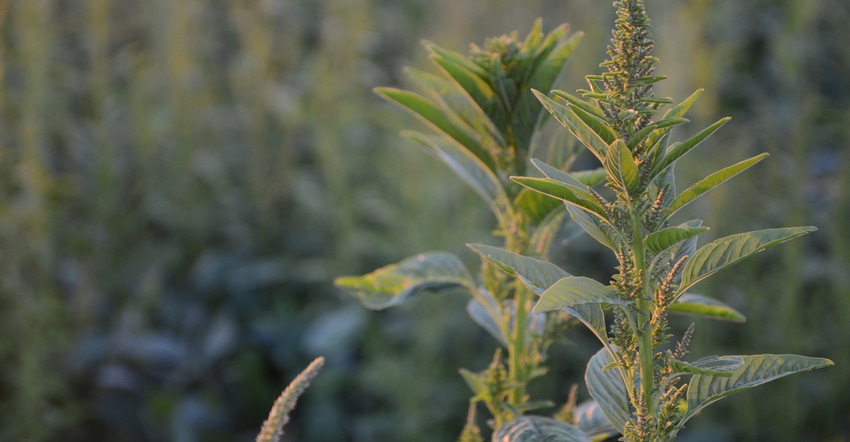
Maybe you’re raising non-GMO soybeans because you have a local market that pays a premium. Or perhaps you’re trying non-GMO beans to cut seed costs. Whatever the reason, more growers are apparently making the non-GMO choice. Bill Johnson fields more calls about how to control weeds in non-GMO soybeans now than in recent years.
The Purdue University Extension weed control specialist offers advice on how to make weed control work in these fields. Here are six tips from Johnson:
1. Some games just aren’t worth playing. Know which weeds you’re battling in each field. If you have tall waterhemp or Palmer amaranth plants resistant to PPO herbicides (Group 14), such as Cobra, Blazer and Flexstar, you’re likely in a no-win situation. Consider GMO beans or corn in those fields.
Likewise, if you have marestail resistant to glyphosate (Group 9) and ALS (Group 2), consider something besides non-GMO beans. If waterhemp is ALS-resistant, it will also be a challenge.
2. Take inventory of other weed control tools. Are cover crops, especially cereal rye, in the field? Will they help on your toughest weeds? Cereal rye tends to be most effective against marestail. Can you use tillage? Is hand-weeding a feasible option? If you must hire hand labor, it’s an expensive choice, Johnson notes.
3. Scout and know which weeds are present at burndown time. If you’re going no-till and spraying burndown, identify weeds in the field. Use guides in the 2019 Ohio, Indiana and Illinois Weed Control Guide to select the right burndown for the weeds you have. Remember, there may be plant-back restrictions for some products, including 2,4-D.
If you’re using tillage, till vigorously so you start with a clean field.
4. Use mixtures and full rates of herbicides. A three-way mix of group 14, 15 and 2 herbicides is recommended. Examples of herbicides in these classes include: (Group 14) Authority, Valor, Sharpen; (Group 15) Dual, Warrant, Outlook, Zidua; and (Group 2) Classic, FirstRate.
5. Sprayer setup is critical. Waiting until you’re ready to spray won’t cut it, Johnson says. Make sure the sprayer is thoroughly cleaned and calibrated with the nozzles you’ll use. Choose the correct nozzles for the application. Check product labels for tip selection to get the right droplet size for the product being applied. Make prudent decisions on adjuvant selection, spray pressure and spray volume.
When it’s time to spray, monitor wind direction and wind speed. Small details make all the difference, especially when you have limited postemergence options. Get it right the first time!
6. Make timely postemergence applications. If the label says a herbicide controls 4-inch weeds, don’t be surprised when you don’t get good control on 8-inch weeds, Johnson says. Match herbicides to the weeds in the field. Spraying 2- to 4-inch weeds is usually most effective, he notes. A 4-inch weed is about the height of a 12-ounce pop can.
About the Author(s)
You May Also Like




